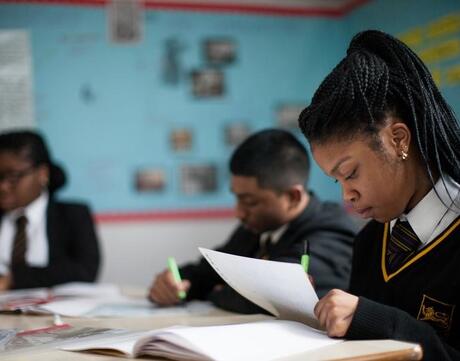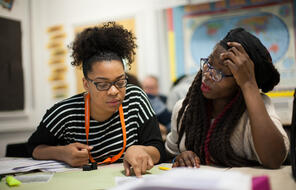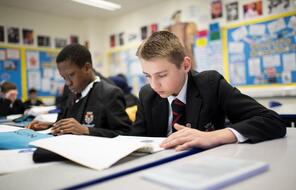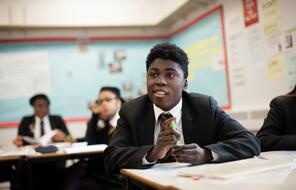
Learning to Navigate Generative AI
Overview
About This Lesson
This is the seventh lesson in a unit designed to help teachers have conversations with students about media literacy in a critical, reflective and constructive way. Use these lessons to help students reflect on the changing media and information landscape; understand how this landscape impacts individuals, communities and society; and consider how they can thoughtfully and responsibly engage with content they encounter online and in print. This learning can also help them become conscientious content creators. Supporting students to develop as critical consumers and creators of information is vital for their well-being, their relationships and our democracy.
In this two-part lesson, students explore what generative AI is and the impact that it can have on both education and society. In the first part of this lesson, students reflect on inventions, learn about generative AI and consider how it can be used in schools. In the second part, students reflect on how they verify information, consider the potential for generative AI to spread misinformation, and learn about steps to verify information they see online. They finish the lesson by exploring how generative AI can impact the world of visual media.
Preparing to Teach
A Note to Teachers
Before teaching this lesson, please review the following information to help guide your preparation process.
Lesson Plans
Part I Activities
Part II Activities
Extension Activities
Materials and Downloads
Learning to Navigate Generative AI
Countering Conspiracy Theories and Extremism
Assessing How the Media and Information Landscape Impacts Democracy
Unlimited Access to Learning. More Added Every Month.
Facing History & Ourselves is designed for educators who want to help students explore identity, think critically, grow emotionally, act ethically, and participate in civic life. It’s hard work, so we’ve developed some go-to professional learning opportunities to help you along the way.
Exploring ELA Text Selection with Julia Torres
On-Demand

Working for Justice, Equity and Civic Agency in Our Schools: A Conversation with Clint Smith
On-Demand

Centering Student Voices to Build Community and Agency
On-Demand




















